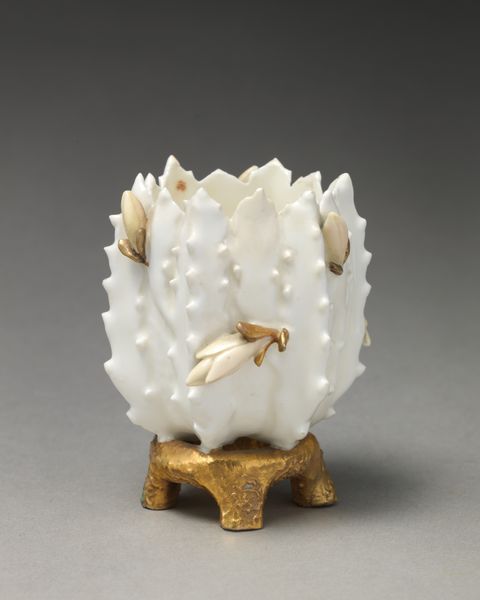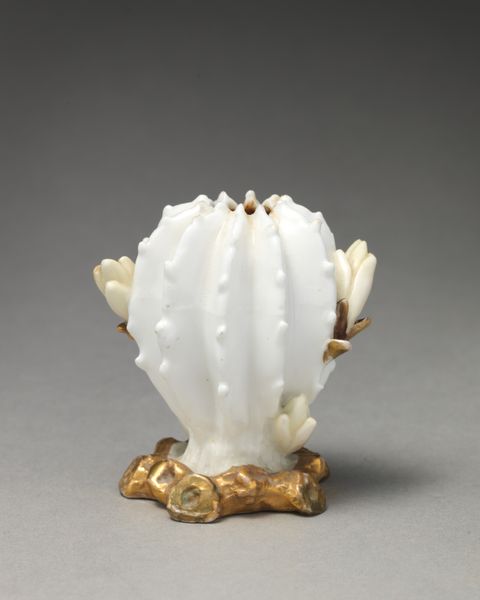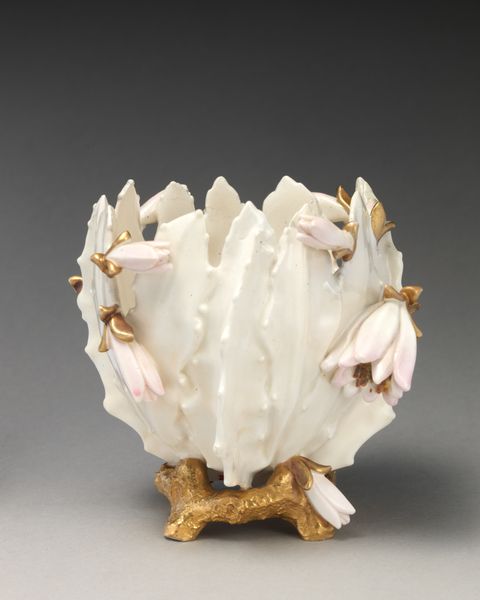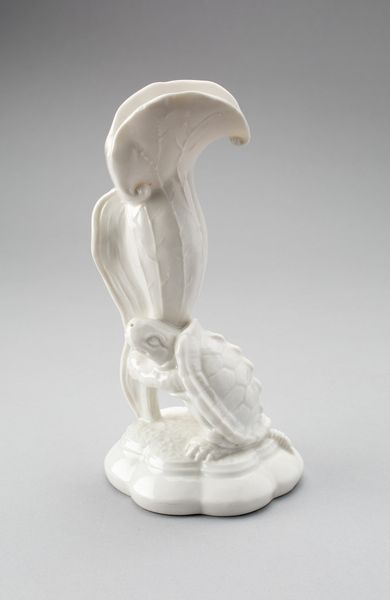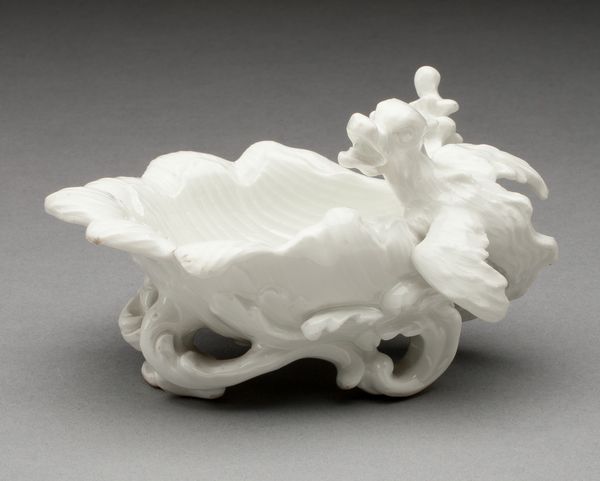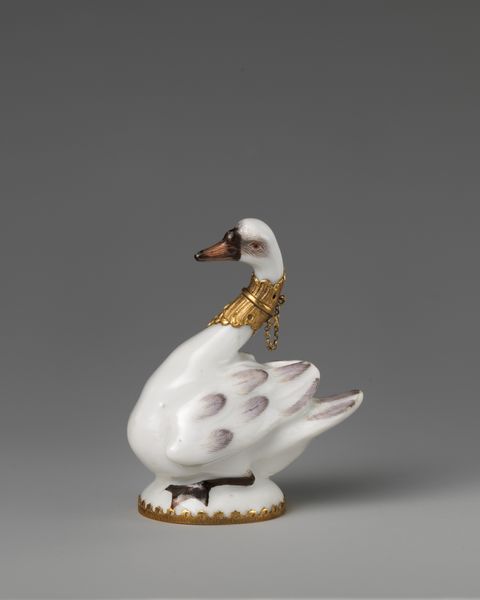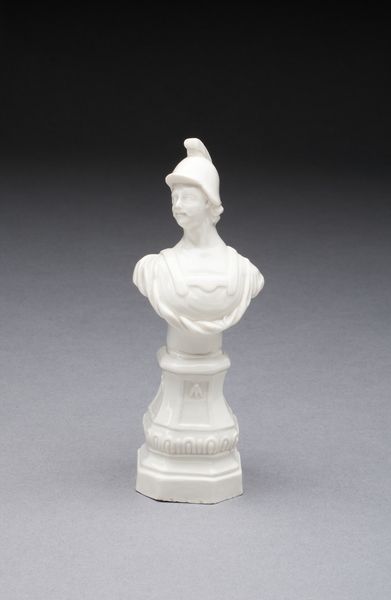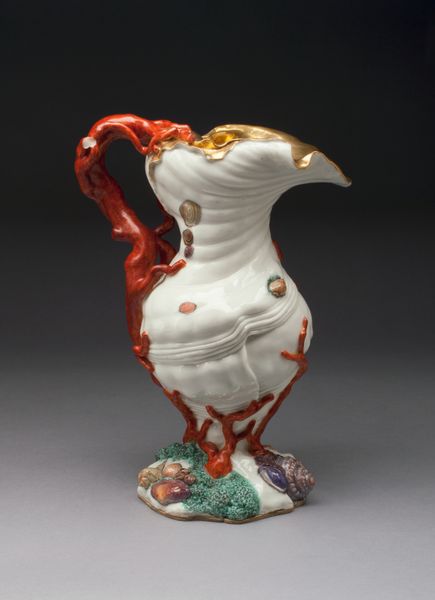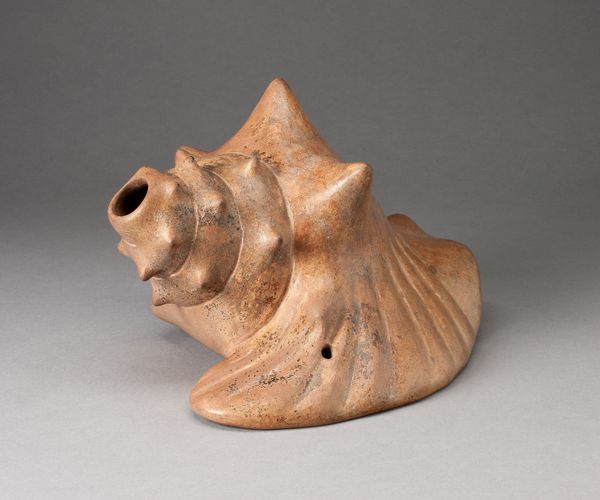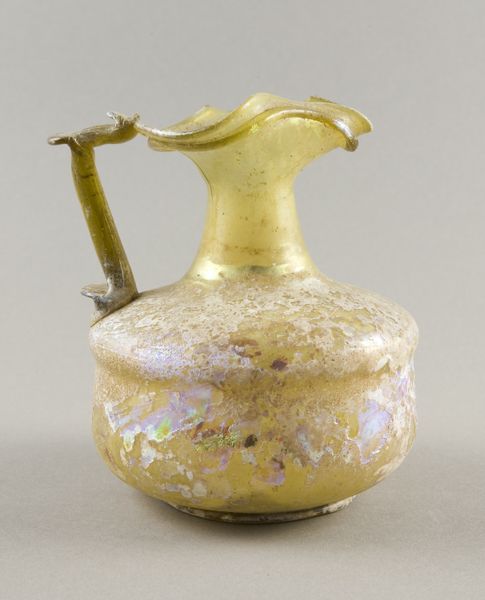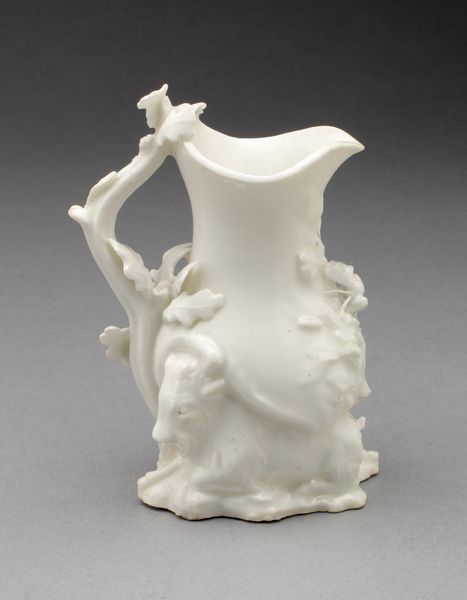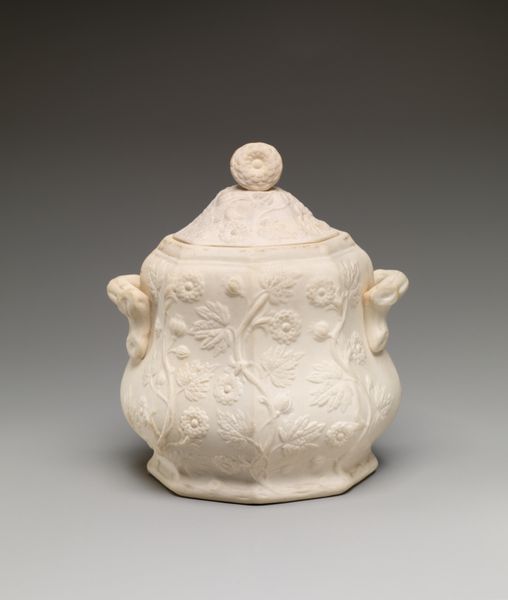
Miniature Vase in the form of cactus or succulent 1880s
0:00
0:00
ceramic, porcelain, sculpture
#
3d sculpting
#
circular oval feature
#
3d printed part
#
rounded shape
#
ceramic
#
jewelry design
#
round design
#
porcelain
#
3d character model
#
curved arc
#
3d shape
#
sculpture
#
designed for kid
#
decorative-art
Dimensions: confirmed: 3 × 2 3/4 × 2 7/16 in., 1.764oz. (7.6 × 7 × 6.2 cm, 50g)
Copyright: Public Domain
Curator: What strikes you first about this unusual little piece? Editor: It feels fragile and precious, but also surprisingly robust. That golden base looks solid. Curator: That's a good starting point. This is a miniature vase, crafted by the Moore Brothers in the 1880s. Editor: The brothers? Curator: Indeed, the British ceramic artists, renowned for their porcelain work in Staffordshire. The piece is called "Miniature Vase in the form of cactus or succulent," and the title describes it pretty literally, right? Editor: It does, but I wouldn’t have immediately recognized it as porcelain! All those little thorns. Was that difficult to produce in porcelain? Curator: Certainly, it demanded immense skill. Each tiny thorn and budding flower required meticulous detail. The prickly pear cactus has roots in Mexican iconography. But, in Europe at this time, such exotic flora would have carried different, more generalized signals about beauty and perhaps refinement. Editor: The choice of material here elevates a common botanical form to a luxury object, it seems to me. It also transforms a sturdy, somewhat ungainly plant into something delicate and refined. Porcelain was certainly valued for the elite trade. Curator: Right, a perfect reflection of Victorian interests. Think of it placed within a bourgeois drawing room! Perhaps it served as an aspirational symbol or signifier for access to a wider, expanding world. Editor: It makes you think about Victorian glasshouses, right? These structures served the function of containing and transforming an alien landscape. The vase recreates that transformation in miniature, but even better—made from high-end materials! Curator: Fascinating perspective! For me, the object's charm lies in its duality. It embodies the natural world rendered as art, mirroring how the Victorians transformed nature through elaborate ornamentation. The exotic cactus is divorced from its desert context and transformed into something precious. Editor: I can appreciate it from that perspective, though to me, its true value sits within the meticulous labor, a sort of slow, materialized excess of the British Ceramic industry. It reflects both production capability and colonial ambition. Curator: An object of beauty holding deeper cultural stories, then, from differing angles!
Comments
No comments
Be the first to comment and join the conversation on the ultimate creative platform.
